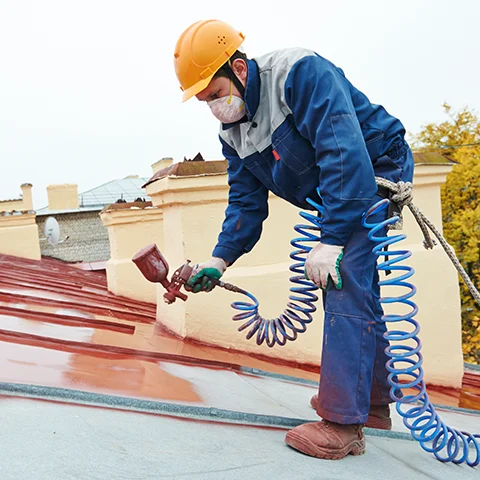Roof Foam Coating
Our roof foam coating services provide superior insulation, waterproofing, and energy efficiency for homes and businesses in Fairfax, VA. King’s Roofing Company specializes in spray foam roofing to prevent leaks and extend roof longevity in Northern Virginia and Maryland.

Why Choose Spray Foam Roofing in Northern Virginia?
Foam roof coatings create a seamless, energy-efficient barrier that extends the lifespan of your existing roof. Our roof foam coating services in Fairfax, VA, help businesses and homeowners reduce cooling costs and improve moisture resistance.
Benefits of Roof Foam Coatings
Our spray foam roofing services in Maryland provide:
- Superior waterproofing to prevent leaks
- Improved energy efficiency by reflecting UV rays
- Extended roof durability without costly replacements
Seamless Roof Protection
Unlike traditional roofing systems, spray foam roofing in Northern Virginia forms a single, continuous layer with no seams or joints, eliminating common weak points where leaks develop.
Reliable Foam Roof Coating in Fairfax, VA
At King’s Roofing Company, we use high-performance spray foam roofing systems, ensuring long-lasting insulation and protection for both residential and commercial properties.